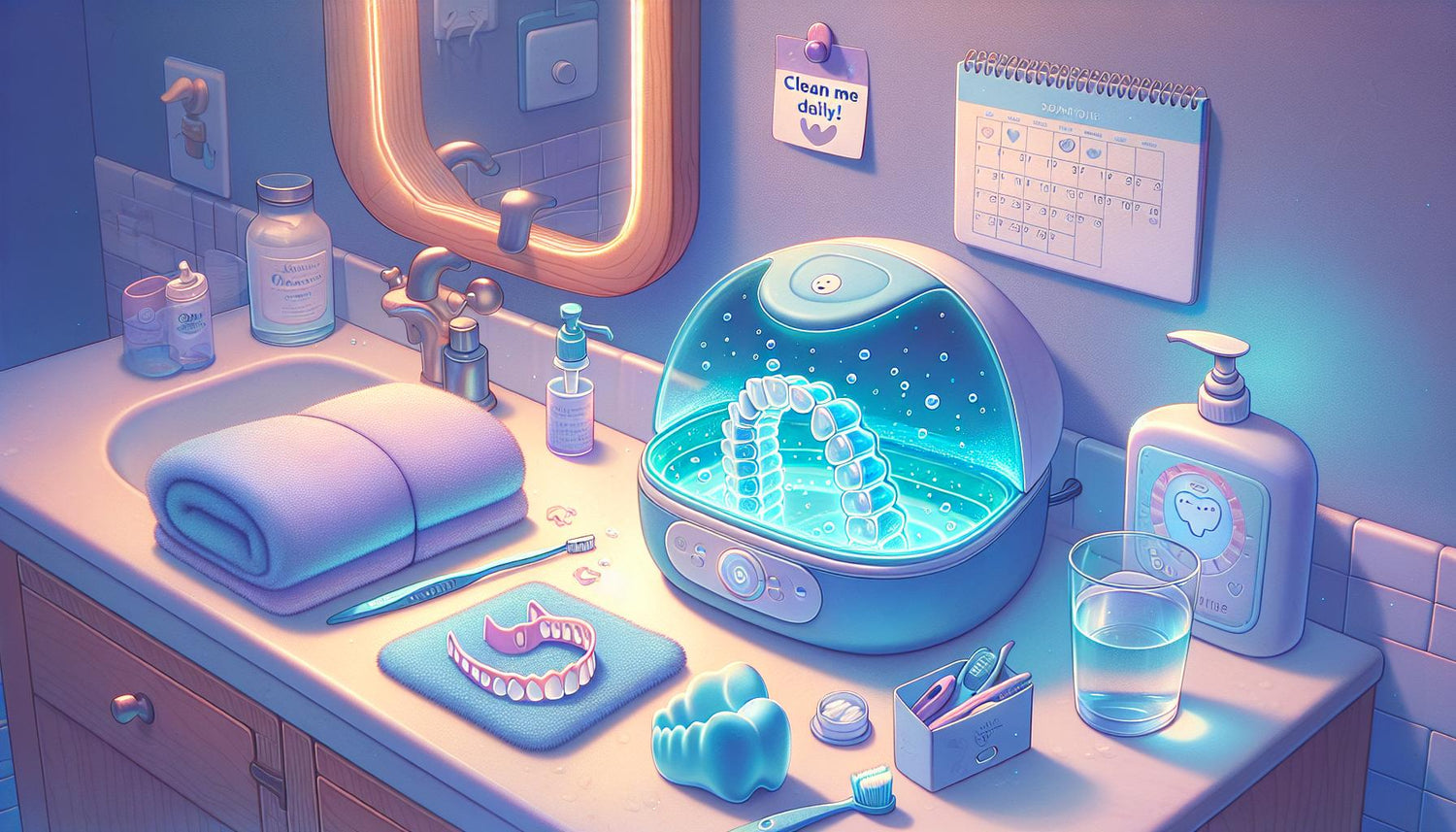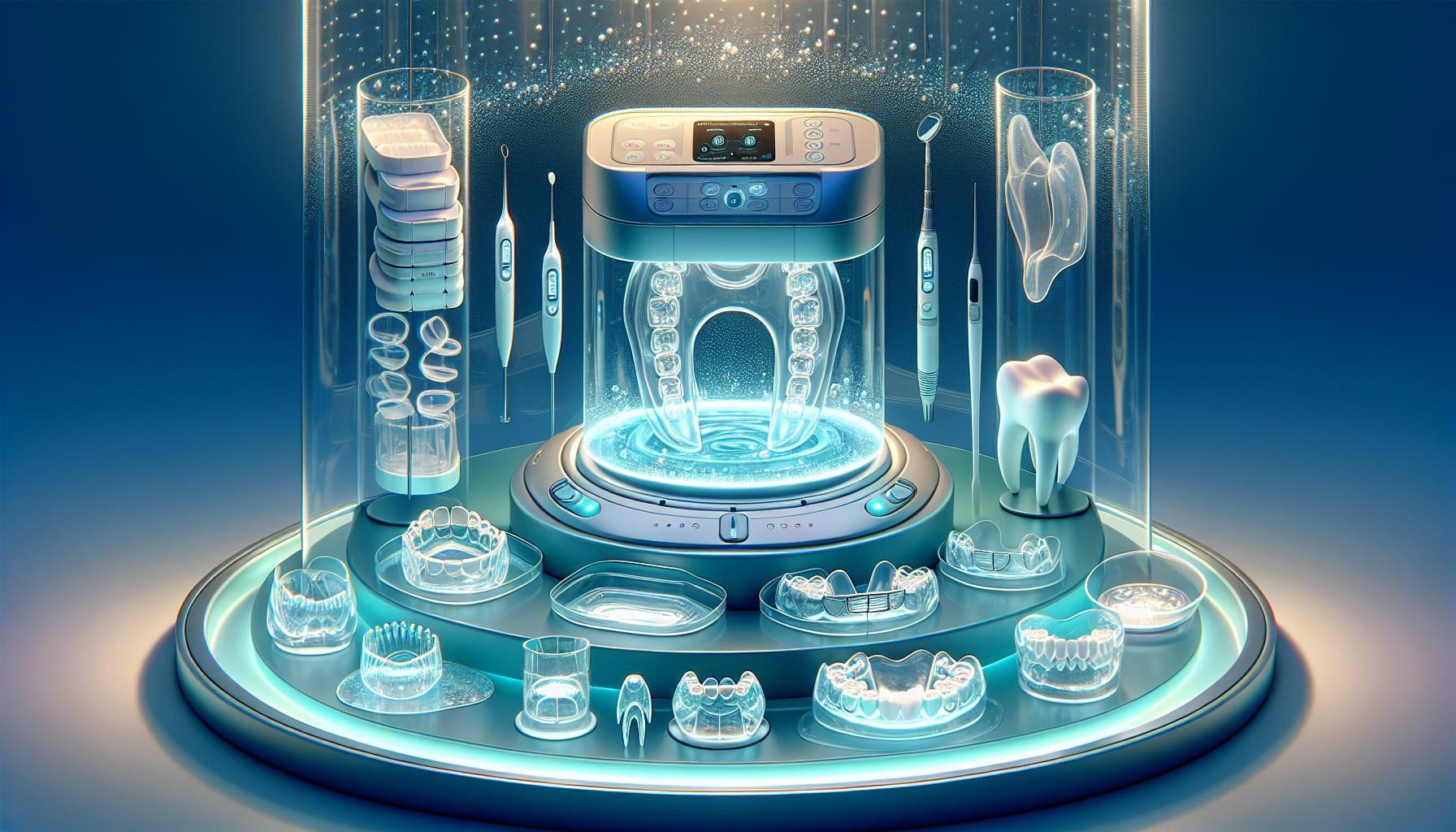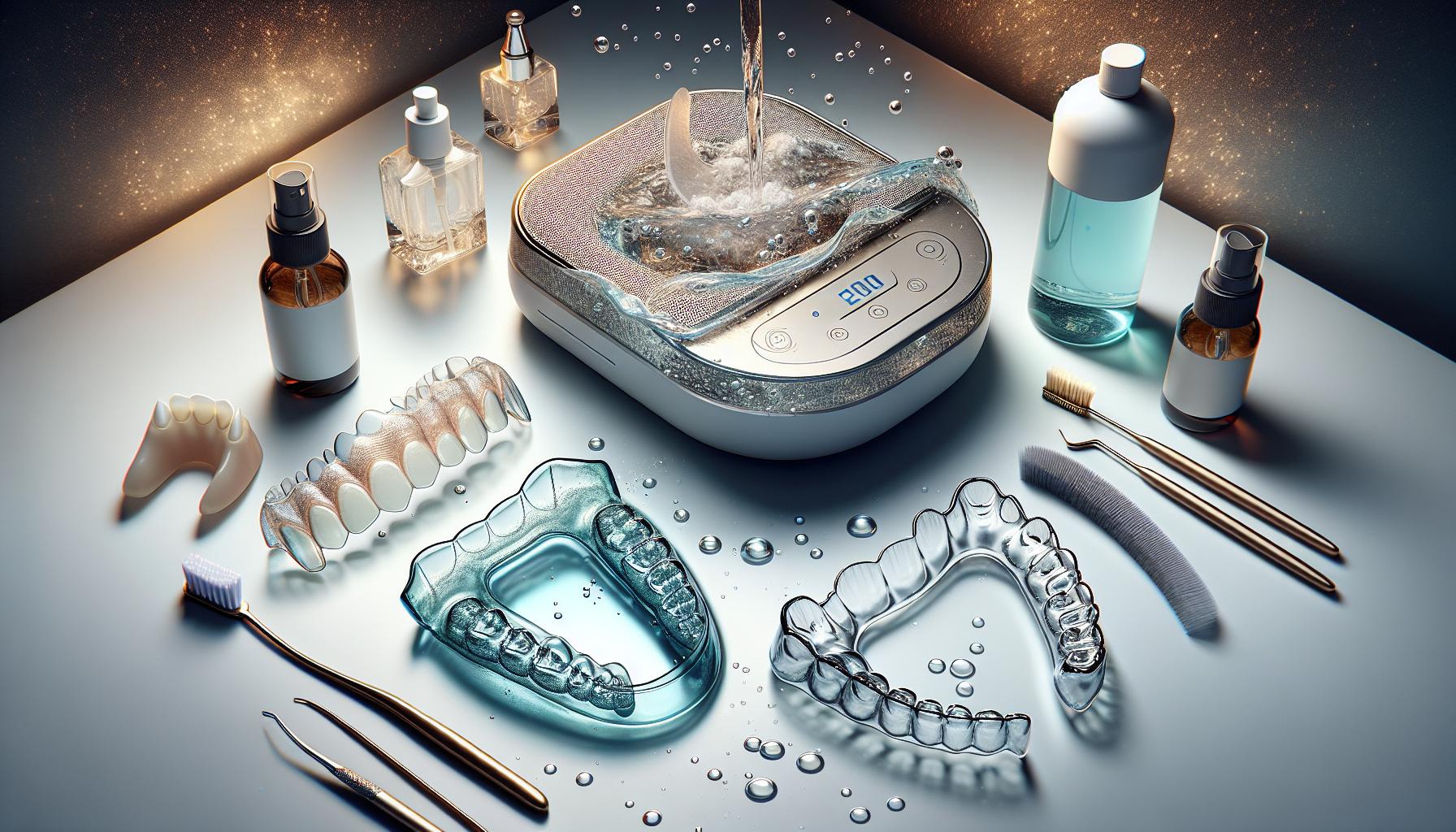What You Need to Know About Retainer Maintenance and Care
Maintaining your retainers is not just about keeping a clear smile—it’s a vital component of your overall oral health. Whether you’re using traditional retainers, insisalign, or other orthodontic devices, proper maintenance ensures that these appliances continue to work effectively and last longer. In this comprehensive guide, we’ll explore everything you need to know about retainer maintenance and care, with a special focus on ultrasonic cleaning methods, storage tips, handling techniques, and more.
If you’re tired of struggling with manual cleaning methods, read on for expert advice and actionable steps that will transform your daily routine. By incorporating an ultrasonic approach into your regimen, you can achieve an optimal retainer clean that not only protects your appliance but also supports your long-term dental health.
Why Proper Retainer Care Is Crucial
Proper retainer maintenance goes far beyond maintaining a clear appearance. Retainers are an essential tool for preserving the correct alignment of your teeth after orthodontic treatment. When care is neglected, debris and bacteria can build up, leading to potential oral health issues such as gum disease, cavities, or even bad breath. Over time, neglecting your appliance’s upkeep can compromise its fit, effectiveness, and even the aesthetic of your smile.
Oral Health Benefits
Good retainer care helps prevent:
- Bacterial buildup: Regular cleaning reduces the risk of harmful bacteria forming on your appliance.
- Plaque accumulation: A clean retainer minimizes the chance of plaque, which can contribute to tooth decay and gum inflammation.
- Allergic reactions and irritations: Some individuals may experience adverse reactions to the buildup of allergens or residue on retainers.
Appliance Longevity
Not only does proper maintenance protect your oral health, but it also extends the life of your retainer. Consistent care means fewer repair costs and a lower likelihood of needing an early replacement, especially when compared to retainers that suffer from neglect or improper cleaning methods.
Daily Cleaning and Maintenance Tips
Incorporating a daily cleaning routine into your schedule is essential to keep your retainers in top condition. Consistency is key, and the following steps will help you achieve an effective clean every single day.
Step-by-Step Daily Cleaning Routine
-
Rinse Immediately After Use:
As soon as you remove your retainer, rinse it under running water to flush away saliva and food particles. This simple habit is the first line of defense against plaque and staining.
-
Gentle Brushing:
Using a soft-bristled toothbrush, gently brush your retainer to remove any stubborn debris. Avoid using abrasive toothpaste; instead, opt for a cleaner specifically formulated for retainers to prevent scratching or damaging the material.
-
Deep Clean Regularly:
Even with daily care, periodic deep cleaning is essential. A deep clean removes built-up residue and bacteria that ordinary rinsing may not eliminate. Below, we’ll discuss how to leverage ultrasonic cleaning for effective deep cleaning.
The Role of Ultrasonic Cleaning in Daily Routine
Ultrasonic cleaning offers an advanced method for achieving a thorough retainer clean. The method employs high-frequency sound waves to generate microscopic bubbles in a cleaning solution. These bubbles gently dislodge dirt, plaque, and bacteria from every nook and cranny of your retainer.
Benefits of Ultrasonic Cleaning
- Superior Cleaning Efficiency: Ultrasonic retainer devices provide a deep clean beyond what manual brushing is capable of. The vibrations work on all surfaces of your appliance, ensuring a comprehensive removal of contaminants.
- Time Efficiency: Many users find that ultrasonic cleaning greatly reduces the time spent on maintenance routines. This method can often achieve a full clean in just a few minutes.
- Gentle Care: Ultrasonic cleaning is non-abrasive, which means that it won’t wear down or scratch your retainer over time unlike scrubbing with a toothbrush or abrasive cleaners.
Embracing Ultrasonic Technology: A Game-Changer in Retainer Maintenance
With the rise of technology in oral care, the value of ultrasonic retainer devices has come to the forefront. Trusted brands, including Hello Bright, have embraced ultrasonic technology to revolutionize how we approach retainer cleanliness.
How Ultrasonic Cleaners Work
Ultrasonic cleaners use sound wave frequencies that generate cavitation bubbles in a solution. When these bubbles collapse, they release energy that dislodges particles from the retainer’s surface without causing any physical damage. This technique is particularly effective for appliances with intricate designs and multiple surfaces.
Why Choose Ultrasonic Cleaners Over Manual Methods?
When compared to traditional cleaning methods, ultrasonic cleaning offers several advantages:
- Consistency: Automated cleaning ensures that all areas of your retainer are thoroughly cleaned every time.
- Reduced User Error: Unlike manual brushing, which depends on technique, ultrasonic cleaners provide consistent performance regardless of user approach.
- Enhanced Sanitation: The deep cleaning action kills bacteria and removes debris without the need for harsh chemicals or excessive brushing.
Recommended Ultrasonic Cleaners
For those interested in integrating this technology into their oral care routine, checking out products from Hello Bright is a great first step. Hello Bright’s lineup of ultrasonic cleaning devices is designed with both efficiency and ease of use in mind. Their products ensure that every retainer, whether it be traditional or insisalign, is maintained in optimal condition while minimizing any potential risk of damage.
Proper Storage Techniques for Your Retainer
Even the best cleaning methods can be undermined if your retainer isn’t stored correctly. Proper storage is essential to prevent contamination and physical damage.
Storage Guidelines
-
Use a Hard Case:
Invest in a high-quality retainer case that offers firm protection. A hard case keeps debris out and minimizes the risk of your retainer getting bent or otherwise damaged. Make sure the case fits your appliance snugly to avoid unnecessary movement.
-
Avoid Exposure to Contaminants:
When not in use, store your retainer in a clean, dry place. Avoid leaving it in places where it might be exposed to environmental particles or extreme temperatures, as these can alter its shape or integrity.
-
Regular Disinfection:
Along with routine cleaning, consider disinfecting your storage case periodically. A simple wipe-down with a disinfectant solution can prevent the growth of bacteria and mold, ensuring that your appliance remains hygienic between uses.
Tips on Handling Your Retainer
-
Wash Your Hands First:
Always wash your hands thoroughly before touching your retainer. This practice minimizes the risk of transferring bacteria from your hands to your appliance.
-
Avoid Bending or Twisting:
When removing or inserting your retainer, avoid bending or applying excessive force. Gentle manipulation will help maintain the structural integrity of your retainer.
-
Inspect Regularly:
Make it a habit to inspect your retainer after each cleaning session. Check for cracks, warping, or any signs of wear. Early detection of issues can prevent more significant problems and may help you avoid costly replacements.
Addressing Common Issues with Retainers
Even with the best care protocols in place, retainers may occasionally develop issues. Knowing how to address these problems can save you both time and money.
What to Do if Your Retainer Becomes Damaged
Damage to a retainer can occur for a variety of reasons, including accidental drops, improper cleaning methods, and general wear and tear. If you notice any cracks or significant deformations:
-
Contact Your Provider:
Reach out to your orthodontist or dental professional immediately. They can assess the damage and determine whether a repair or a replacement is necessary.
-
Do Not Attempt DIY Repairs:
Avoid using adhesives or other repair methods on your own. These fixes often compromise the retainer’s structure and can lead to further complications.
Handling Fit Issues
A retainer that no longer fits properly not only affects comfort but may also reduce the effectiveness of your treatment. If you experience any discomfort or notice that your retainer is not aligning with your teeth as it once did, consider the following:
-
Schedule an Appointment:
An adjustment might be necessary. Your orthodontist can fine-tune the retainer or provide guidance on whether a new appliance is needed.
-
Cleaning and Maintenance:
Sometimes, debris build-up can cause a poor fit. A thorough cleaning—including an ultrasonic cleaning cycle—might restore the retainer to its original precision.
Preventative Measures
Prevention is always better than cure. Consistent, proper care is the most effective way to prevent common retainer problems:
- Daily Cleaning: Adhere to your daily cleaning routine to prevent build-up of plaque and bacteria.
- Regular Inspections: Frequently inspect your retainer for any early signs of damage or wear. Addressing minor issues early on can prevent major problems later.
- Proper Handling: Implement safe handling techniques every time you remove or insert your retainer. Gentle and mindful handling can save you from future frustrations and expenses.
A Closer Look: Ultrasonic Retainers in the Spotlight
The interplay between modern technology and traditional orthodontic care is revolutionizing how we maintain oral health. Ultrasonic retainers are at the forefront of this shift, providing an effective and efficient method for deep cleaning and maintenance.
How Ultrasonic Retainers Enhance Oral Health
The design of ultrasonic retainer cleaning devices allows for:
- Advanced Hygiene: By reaching crevices and surfaces that are often inaccessible to manual brushing, ultrasonic technology offers a level of cleanliness that directly improves overall oral hygiene.
- Time-Saving Efficiency: For many, the busy pace of daily life makes lengthy cleaning routines impractical. Ultrasonic systems streamline the process, delivering a deep clean in minutes that would otherwise require prolonged manual effort.
- Consistent Results: Every cycle of ultrasonic cleaning is consistent. This reliability ensures that your retainer remains free from harmful bacteria, no matter your schedule or how it’s used during the day.
Integrating Ultrasonic Cleaners Into Your Routine
To incorporate ultrasonic cleaning into your daily or weekly care routine, consider these steps:
-
Invest in a Quality Ultrasonic Cleaner:
Look for devices that are specifically designed for dental appliances. The market offers a wide range of models that cater to different needs and budgets.
-
Follow Manufacturer Guidelines:
Each ultrasonic cleaner comes with detailed instructions on usage and maintenance. Adhering to these guidelines will ensure optimal performance and longevity of both your cleaner and your retainers.
-
Regular Use:
Make ultrasonic cleaning a consistent part of your regimen. Whether integrated as a daily deep clean or as part of a weekly routine, the benefits of ultrasonic technology will rapidly become evident.
For those new to ultrasonic cleaning, exploring trusted platforms such as Hello Bright can provide access to a curated selection of devices that meet the highest quality standards. Their range of products is designed with the user in mind, ensuring an improved retainer clean every time.
Actionable Advice for Daily Retainer Care
Daily Routine Checklist
- Begin your day by rinsing your retainer thoroughly after each use.
- Use a soft brush or a retainer-specific cleaner to gently clean all surfaces.
- Incorporate an ultrasonic cleaning session at least once a week, ideally using a device from a trusted source like Hello Bright.
- Inspect your retainer for any signs of wear or damage. Early detection can aid in a timely repair or adjustment.
- Ensure proper storage by placing your retainer in a protective case when not in use.
- Always wash your hands before handling your retainer to minimize exposure to germs.
Weekly Deep Cleaning Routine
- Set aside a specific day each week for a deep cleaning session. This extra step will remove any debris and buildup that regular daily cleaning might miss.
- If using an ultrasonic cleaner, fill the device with a recommended cleaning solution (following the supplier’s instructions carefully) and initiate a full cleaning cycle.
- After the ultrasonic cycle, rinse your retainer thoroughly before placing it back in its case.
- Inspect your retainer to ensure that all debris has been dislodged. If necessary, give it an additional gentle brush.
Monthly and Periodic Checks
- Once a month, check the condition of your retainer storage case. Clean and disinfect the case to remove any bacteria that might have accumulated.
- Schedule a visit with your orthodontist or dental provider for a professional evaluation of your appliance. This not only helps in maintaining proper dental alignment but also ensures that your retainer is functioning as intended.
Comparing Cleaning Methods: Ultrasonic vs. Manual
Manual Cleaning
Manual cleaning has been the traditional method for retainer maintenance. It involves:
- Brushing the retainer gently with a soft brush.
- Rinsing under running water.
- Occasionally soaking the retainer in a cleaning solution.
While manual cleaning is effective for removing surface-level grime, it has several limitations:
- Inconsistent cleaning: The effectiveness often depends on the user’s technique.
- Time-consuming: Thorough cleaning may require significant time and multiple steps.
- Risk of damage: Over-brushing or abrasive cleaners can scratch and weaken the retainer’s material.
Ultrasonic Cleaning
Ultrasonic cleaning uses technology to address the shortcomings of manual cleaning:
- Comprehensive Debris Removal: Ultrasonic retainer cleaning devices systematically reach all surfaces, ensuring no area is left untreated.
- Consistency and Reliability: With automated cycles, users can expect the same level of cleanliness every time.
- Reduced Physical Wear and Tear: The non-abrasive cleaning process reduces the risk of damaging your retainer, leading to a longer lifespan.
For those looking to make a measurable improvement in their cleaning routine, ultrasonic cleaning offers a forward-thinking solution that enhances both oral hygiene and appliance longevity.
Special Focus: Caring for Insisalign and Other Orthodontic Appliances
Best Practices for Insisalign
-
Routine Cleaning:
Use the same general cleaning steps as you would for traditional retainers. A gentle brush paired with routine rinsing and periodic ultrasonic cleaning is ideal.
-
Frequent Inspections:
Given the precise fit required for insisalign, it is crucial to inspect the appliance frequently. Any change in its shape or surface should prompt a consultation with your orthodontist.
-
Storage Considerations:
Similar to traditional retainers, insisalign should be stored in a clean, protective case when not in use. This guards against accidental damage and the accumulation of dirt.
The Long-Term Impact of Proper Retainer Care
Improved Oral Health Outcomes
- Reduced Risk of Infections: Consistent cleaning practices minimize the presence of harmful bacteria, reducing the risk of oral infections.
- Better Overall Hygiene: A well-maintained retainer supports your overall dental hygiene routine, complementing regular brushing and flossing habits.
Extending Appliance Longevity
- Cost Efficiency: A well-cared-for retainer is less likely to require frequent repairs or early replacement, saving you money over time.
- Maintaining Optimal Performance: Keeping your retainer in pristine condition ensures it remains effective in preserving your dental alignment and overall bite integrity.
Confidence in Your Smile
A clean, well-maintained retainer not only supports dental health but also boosts your confidence. When you know that your appliance is free of debris and bacteria, you’re more likely to wear it consistently—a critical factor in the success of your orthodontic treatment.
Conclusion: Making the Switch to a Superior Cleaning Routine
Taking care of your retainer is a responsibility that should not be underestimated. With diligent daily care, proper storage, and periodic deep cleaning—especially using ultrasonic retainer systems—the long-term benefits to your oral health and the longevity of your appliance are substantial.
By following the actionable advice outlined in this guide:
- You will reduce the risk of bacterial buildup and other oral health issues.
- Your retainer will remain in peak condition, ensuring continued effectiveness in maintaining your dental alignment.
- You will enjoy the convenience and reliability of ultrasonic cleaning, a method that offers unparalleled efficiency over manual efforts.
Embracing technology is the way forward in oral care. If you haven’t yet experienced the benefits of an ultrasonic cleaning regimen, consider exploring trusted solutions from Hello Bright. Their ultrasonic devices offer a smart, modern solution to traditional cleaning challenges, providing you with a consistently clean and long-lasting retainer.
Remember, a little extra care today goes a long way in ensuring a healthier, brighter smile tomorrow. Start incorporating these practices into your daily routine and experience the difference in your retainer’s performance and your overall dental well-being.
By prioritizing proper retainer maintenance and care, you not only extend the life of your orthodontic devices but also pave the way for better oral health in the long run. Whether you use traditional retainers, insisalign, or other appliances, the principles of thorough cleaning, careful handling, and proper storage are universal.
Embrace the benefits of ultrasonic cleaning and let technology enhance your oral health routine. Your smile is worth the effort, and with the right care approach, you can ensure that your retainers always do their best work in keeping your teeth aligned and your confidence high.
So take charge of your retainer care today—invest in quality cleaning solutions, follow a rigorous routine, and soon you’ll notice the remarkable difference that consistent, thoughtful maintenance can make. Enjoy the journey to a healthier, more radiant smile with the peace of mind that comes from knowing you’re making a smart investment in your overall well-being.


